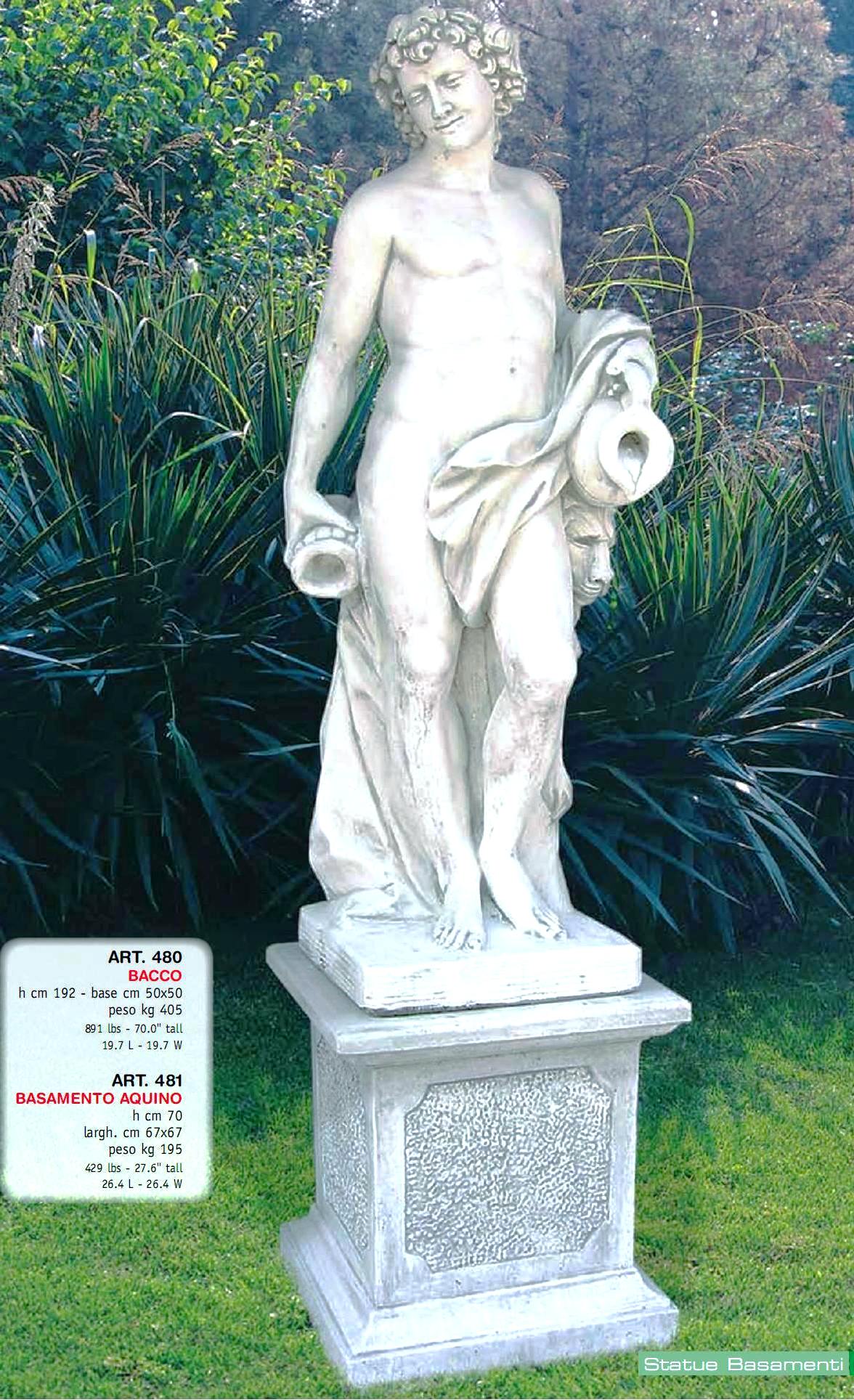GARDEN STATUE OF BACCHUS-GOD OF
WINE , RENAISSANCE
SCULPTURES , OUTDOOR GREEK AND ROMAN MYTHOLOGY STATUES, STATUARY YARD.
ART
|
|||||||||||
Email ; sales@italartworld.com Toll Free 1800 515 1977 Fax 916 515 1639
Made In Italy !
 |
(Click on image back to large statues page) Bacchus God of Wine Shown w/ Aquino base ! 1,790 72" tall (5 ft 2 in) 801 Lbs-19"l-19"L on base Estimated shipping weight 980 lbs Dionysus also known as Bacchus was the god of wine and inspired madness, and a major figure of Greek mythology. He represents not only the intoxicating power of wine, but also its social and beneficial influences. The geographical origins of his cult were unknown, but almost all myths depicted him as having "foreign" (i.e. non-Greek) origins. He was also known as Bacchus and the frenzy he induces, bakcheia. He is the patron deity of agriculture and the theatre. He was also known as the Liberator (Eleutherios), freeing one from one's normal self, by madness, ecstasy, or wine. The divine mission of Dionysus was to mingle the music of the aulos and to bring an end to care and worry. Scholars have discussed Dionysus' relationship to the "cult of the souls" and his ability to preside over communication between the living and the dead. In Greek mythology Dionysus is made to be a son of Zeus and Semele; other versions of the myth contend that he is a son of Zeus and Persephone. He is described as being womanly or "man-womanish". Dionysus had an unusual birth that evokes the difficulty in fitting him into the Olympian pantheon. His mother was Semele (daughter of Cadmus), a mortal woman, and his father Zeus, the king of the gods. Zeus's wife, Hera, a jealous and vain goddess, discovered the affair while Semele was pregnant. Appearing as an old crone, Hera befriended Semele, who confided in her that her husband was actually Zeus. Hera pretended not to believe her, and planted seeds of doubt in Semele's mind. Curious, Semele demanded of Zeus that he reveal himself in all his glory as proof of his godhood. Though Zeus begged her not to ask this, she persisted and he agreed. Mortals, however, cannot look upon a god without dying, and she perished. Zeus rescued the fetal Dionysus, however, by sewing him into his thigh. (can be used as fountain piece)
|
